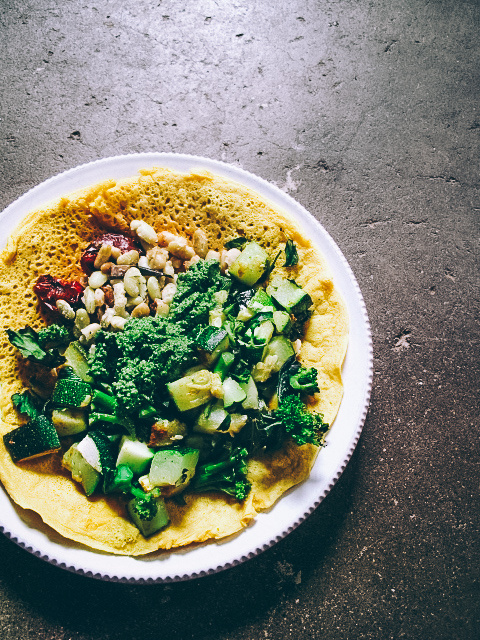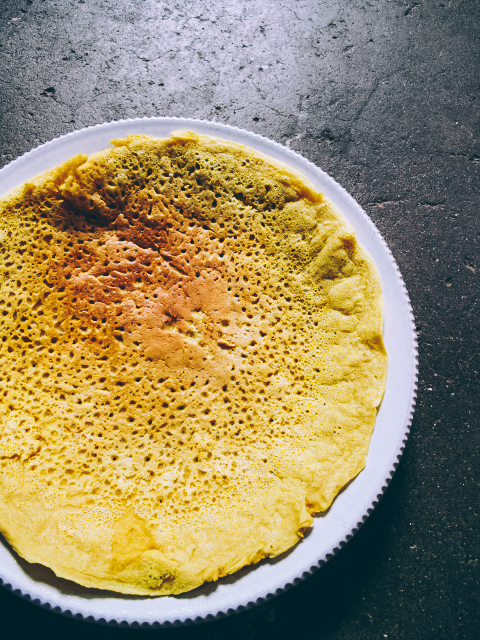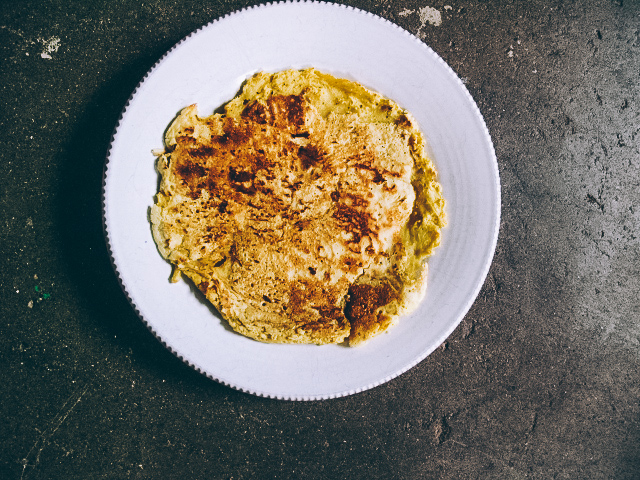
Updated: June 5, 2021
Over the years as I increased my athletic activity load and gradually began eating in a way that was more vegetable and plant heavy and included even less animal protein than before, I was curiously never asked the question that so often comes up when one stops eating meat. No one ever asked me Where do you get your protein?, the stereotypical question that so often comes up about plant-based diets. Knowing the basics of nutrition, and always adding a small protein source to my meals, I wasn’t at all worried about not getting enough. And interestingly, amongst many of the athletic women in my community who choose predominately vegan meals, it’s common that no one else is worried about protein either, with many active individuals like myself commonly eating plenty of whole grains and plant-heavy dishes that seem incredibly nutrient dense–yet they’re still left wondering over time why their health is in decline. I know I’ve for sure been in this scenario.
It wasn’t until I saw a nutritionist near the beginning of graduate school that I began to realize I too fell into dietary imbalance. My nutritionist mentor pointed out, You’re REALLY active. And for your activity level and because you tend to avoid meat, you need A LOT more protein. For quite a few months before I learned the particulars of what protein’s amino acids are doing in the body, and the higher needs of plant-based athletes, I really struggled with her suggestions to increase my intake.
Now before we get into the particulars, I’ll add a caveat that I do tend to eat some animal protein, usually in the form of monthly-ish wild-caught fish, a handful of eggs per month, and every once in a while, a bit of other meat. This blog post is not about the why’s of how I eat, or to encourage or discourage anyone from adopting a plant-based or vegan diet, it’s simply to support what the nutritional science currently knows about protein and our needs based on activity level and dietary choices.
As we all learned in grade school science, protein is made up of amino acids. Certain amino acids are essential to eat because the body, though incredibly wise, cannot make them out of other amino acids, as it otherwise can do.
Protein at its most basic understanding, builds muscle. We all learned that in elementary school and the idea is popularized in the cross-fit / weightlifting community. Beyond that role, amino acids from protein are used for bone health, enzyme formation to catalyze and carry out essential metabolic reactions, energy creation, to bind together skin and tendons, blood vessels, in the digestive system, and more. Nearly every one of the body’s 100 trillion or so cells is composed of various proteins, so our bodies require amino acids to function optimally. We don’t necessarily need “a lot” of protein in the diet, but we do need enough to meet our individual body’s needs.
Where vegetarian and vegans differ from meat-eating individuals is that they actually require a bit more protein as a percentage of body weight. This is because plant-based protein sources exhibit slightly lower digestibility than animal-based proteins (5). Athletes of all types who train more than about 30 minutes 3x / week require more too than the non-athletic community. And vegetarian and vegan athletes require just a bit more. So compared to their meat-eating counterparts, a vegan marathon or ultrarunner for example, needs quite a bit more protein than an individual who fuels with meat, and that protein can be more difficult to come by—especially when or if further dietary limitations come into play, such as when soy, legume, or nut allergies also limit food choices.
When I work with individuals, I don’t tend to give amounts or percentages of protein because we all eat food and food contains many different macro and micronutrients. In fact, even a plate of plain vegetables can offer a little boost of protein. I also never encourage anyone to get caught up in tracking meals rigidly to reach a certain number of either calories or nutrient values. That practice breeds its own problems.
But for the sake of being more precise, our current research suggests that vegan athletes need from 1.3-2.0 grams of protein per kilogram of body weight in the diet per day (1, 2, 3), with that intake being closer to the high end when there is a lot of high intensity or big-mileage pursuits in the regular training plan. For a 130-ish pound female athlete, that’s roughly 120 grams of protein per day, which is more easily achieved with two servings of fish or meat in the meal plan for a day, but maybe not so much with beans, quinoa, and lots of fresh vegetables. In other words, active vegan athletes training for challenging events are going to have to work to get the necessary protein in to meet the body’s needs and repair itself adequately. That’s where and why a good-quality protein powder might come in handy, as well as adding in little extras throughout the day and diet to help.
One other thing to note is that our currently data suggest that a good amount of protein per meal is from 20 to 30 grams, and this is enough to help the body begin to recover post-exercise and throughout the day. More than 30 grams in a single meal is not necessarily beneficial, i.e. the body metabolizes protein best when it’s eaten throughout the day in meals that contain that 20-30 gram amount. Weightlifters slamming 50+ grams post-workout aren’t necessarily doing their body any favors. And neither is the person that eats one large meal that contains a burger and bacon, or a surf and turf steak and seafood meal, or a meat-lovers pizza.
Beyond just needing more protein if you’re a vegan athlete, those with active inflammation, such as when healing from an injury, getting over a long illness, or dealing with an autoimmune disorder likely need more protein as well, since more (of all nutrients) are going to be used in the body’s process to repair itself.
For a lot of individuals who know or suspect their protein intake is low for their needs, I generally suggest making small changes that start to add up. Adding more nuts and seeds of all types to morning porridge, swapping the amounts of beans and rice for dinner (more beans / less rice), rotating in tofu and tempeh more often, and adding in chickpea or other bean flours where previously grain-based flour was used are examples I often employ in my own meal patterns.
When choosing to eat whole grains, there are also certain choices that are higher in protein than others, such as wild rice (6.6g / cup), spelt berries (6.6g / cup), quinoa (6.4g / cup), amaranth (6.4g / cup), buckwheat (6g / cup), oats (5.9g / cup), and barley (5.6g / cup) (4).
Another idea is to start being more creative with beans such as using a chickpea flour to make delicious socca, a French pancake or crepe-like flatbread that’s simple, quick, and tasty. Socca is one of my favorite ways to add a little extra protein boost in a meal when I’d otherwise reach for a more-carbohydrate-rich food, like bread, flatbread, or a cooked grain.

If this topic interests you, below are a couple follow-up articles that give more meal ideas and delve deeper into one of the amino acids that frequently falls short in a vegan diet (leucine). They are all great short reads.
Thinking about becoming a vegan athlete? (with information about meeting leucine requirements)
No Meat Athlete Protein Bowl with 30 grams protein
The Full Helping’s protein meals combinations (not specific to athletes / contains some lower protein examples)

Socca, makes 2
1 cup chickpea flour
1/2 tsp. baking powder
pinch of salt and dash or two of black pepper
1 tsp. turmeric
1 cup water
oil, just enough to coat the pan
- In a medium bowl, combine the flour, baking powder, salt and pepper, turmeric, and then water. Whisk until you have a smooth batter. Set aside while you heat a large skillet over medium heat.
- When the pan is hot, lightly brush the bottom with oil. Pour in half the socca batter (about 3/4 cup) and tilt the pan to distribute it evenly. Cook for about four minutes, until the bottom is browned and comes away easily from the pan, and then flip to do the same on the other side. Repeat with the remaining socca batter.
- Remove the socca to a plate, and serve alongside or as a base for whatever other ingredients you prefer.
References:
- Kerksick, C.M. and Kulovitz, M. (2013). Requirements of Energy, Carbohydrates, Proteins, and Fat for Athletes. Nutrition and Enhanced Sports Performance. Doi: http://dx.doi.org/10.1016/B978-0-12-396454-0.00036-9.
- Zhou, J., Li, J., and Campbell, W.W. (2013). Vegetarian Athletes. Nutrition and Enhanced Sports Performance. Doi: http://dx.doi.org/10.1016/B978-0-12-396454-0.00036-9.
- Witard, O.C., Garthe, I., and Phillips, S.M. (2019). Dietary Protein for Training Adaptation and Body Composition Manipulation in Track and Field Athletes. International Journal of Sports Nutrition and Exercise Metabolism, 29(2), 165-174. Doi: https://doi.org/10.1123/ijsnem.2018-0267.
- Whole Grains Council. (2014). Whole Grain Protein Power! Retrieved from: https://wholegrainscouncil.org/blog/2014/02/whole-grain-protein-power.
- van Vliet, S., Burd, N.A., van Loon, L.JC. (2015). The Skeletal Muscle Anabolic Response to Plant- versus Animal-Based Protein Consumption. The Journal of Nutrition, 145(9), 1981-91. Doi: https://doi.org/10.3945/jn.114.204305.
